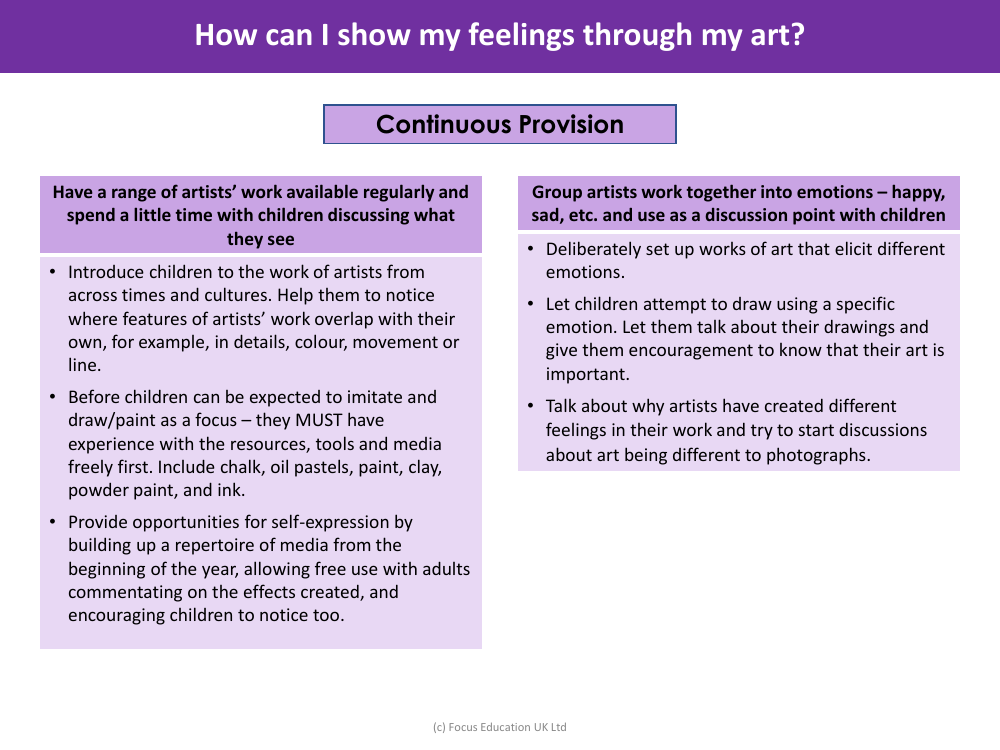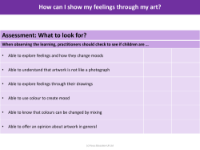How can I show my feelings through my art? - Continuous Provision

Art and Design Resource Description
Exploring emotions through art is a powerful form of self-expression, and it can be fostered in children by incorporating a continuous provision approach. To begin this journey, it's beneficial to have a diverse collection of artists' work readily available. Spend time with the children, engaging in conversations about what they observe in these pieces. By introducing them to a variety of artists from different times and cultures, children can begin to identify similarities between the featured artwork and their own creations, whether it's in the use of detail, colour, movement, or line.
Before expecting children to replicate or create focused artwork, it is essential they have ample opportunity to experiment with different resources, tools, and media. This could include materials such as chalk, oil pastels, paint, clay, powder paint, and ink. Encourage self-expression by gradually introducing a wide range of media from the beginning of the academic year, allowing children to explore freely. Adults can play a key role by commenting on the effects created and prompting the children to take notice of the various outcomes of their experimentation. Grouping artists' work by emotions, such as happiness or sadness, serves as an excellent starting point for discussions. By setting up art pieces that evoke specific feelings and inviting children to create drawings based on a particular emotion, you can create a supportive environment where they feel confident that their artwork is valued. Engage with them about their creations and encourage a dialogue about why artists might convey different emotions through their work, highlighting how art can capture feelings in ways that differ from photography.




